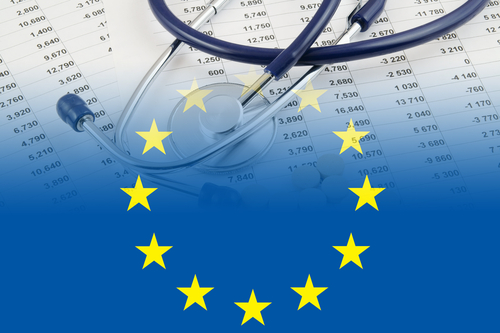Orladeyo Recommended in EU as 1st Oral Treatment to Prevent HAE Attacks
Written by |

BioCryst Pharmaceuticals’ Orladeyo (berotralstat) has been recommended for approval in the European Union as the first oral therapy for preventing swelling attacks in people with hereditary angioedema (HAE), ages 12 and older.
The recommendation was made by the Committee for Medicinal Products for Human Use (CHMP), an arm of the European Medicines Agency. The committee’s recommendations are generally accepted by the European Commission (EC), which makes the final decision on approvals for all medicines in the EU. A decision is expected in the upcoming months.
If approved, Orladeyo would become the first oral daily treatment available in the EU for adolescents and adults with HAE, for whom current preventive treatment is available only through under-the-skin (subcutaneous) injections or into-the-vein (intravenous) infusions.
The oral therapy should be easier to take — and is expected to improve patients’ quality of life and independence.
The CHMP recommendation follows the therapy’s approval, at a daily dose of 150 mg, in the U.S. and Japan for the same indication.
Orladeyo had previously received fast track designation in the U.S., orphan drug and Sakigake designations in Japan, and orphan drug status in Europe — all meant to accelerate the therapy’s development and review.
“Following the recent approvals in the U.S. and Japan, we continue to focus on bringing our oral, once-daily treatment to HAE patients around the world,” Jon Stonehouse, BioCryst’s president and CEO, said in a press release.
“The positive CHMP opinion for Orladeyo is an important step closer to delivering a new option to HAE patients across Europe and our commercial team is in place and ready to launch quickly upon final [European Commission] approval,” Stonehouse said.
Given as an oral capsule once a day, Orladeyo is a small molecule that blocks plasma kallikrein, a precursor of bradykinin — an inflammatory molecule produced in excess in HAE patients, leading to sudden swelling and pain attacks.
By suppressing plasma kallikrein, the therapy is expected to lower bradykinin levels, potentially treating and preventing angioedema attacks. Its oral route of administration is expected to ease the burden of the current injectable treatments.
In a 2020 survey study, sponsored by BioCryst, patients, caregivers, and doctors all agreed that easier-to-administer therapies were needed to improve quality of life and independence for people with HAE.
The CHMP’s positive opinion was based on data from two ongoing clinical trials — the placebo-controlled APeX-2 Phase 3 trial (NCT03485911) and the open-label APeX-S Phase 2/3 trial (NCT03472040).
Both are evaluating Orladeyo’s safety and effectiveness at preventing swelling attacks in HAE patients, 12 and older.
In APeX-2, 121 patients who had experienced at least two HAE attacks in the eight weeks prior to study’s start were randomly assigned to receive a daily capsule of Orladeyo (110 mg or 150 mg) or a placebo for 24 weeks (nearly six months).
All 108 participants who completed treatment entered the trial’s extension phase, in which all received one of Orladeyo’s two doses for at least 24 weeks; totaling one year of treatment or longer for those initially assigned the therapy.
Results showed that both Orladeyo doses significantly reduced the rate of monthly HAE attacks over six months, but the higher, 150 mg dose showed the greatest benefits. While patients on a placebo experienced 2.35 attacks per month, the higher Orladeyo dose lowered that rate by 44%, to 1.31 monthly attacks.
In addition, those receiving the therapy’s higher dose for the whole year showed a drop in their attack rate from a mean of 2.9 monthly attacks to one attack per month, while those switching from a placebo to 150 mg of Orladeyo saw their attack rate decline to less than one per month (mean of 0.4).
Orladeyo-treated patients also reported meaningful improvements in quality of life and patient-reported satisfaction, in addition to a marked reduction in the need for standard on-demand treatment. These patients also experienced more days without any angioedema symptoms.
A joint safety analysis of APeX-2 and APeX-S, comprising a total of 342 patients, showed that the therapy was generally well-tolerated, with no new safety concerns identified.
Orladeyo is currently available in the U.K. before approval to HAE patients, through an Early Access to Medicines Scheme (EAMS). An EAMS gives patient access to therapies not yet approved for commercial use to people with life-threatening or seriously debilitating conditions and a clear unmet medical need.
Should the European Commission follow CHMP’s recommendation, health authorities in each EU member state will decide whether to add Orladeyo to their respective public health programs, where patients can access the treatment at low or no cost.





